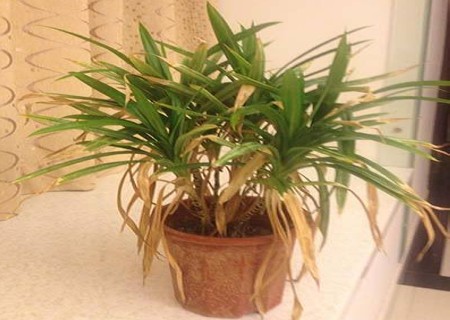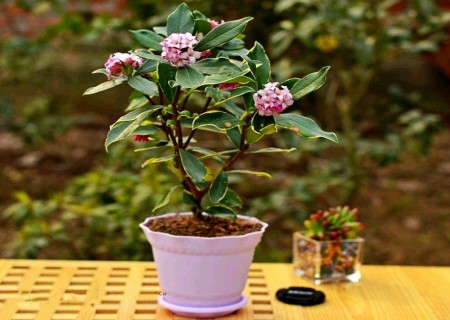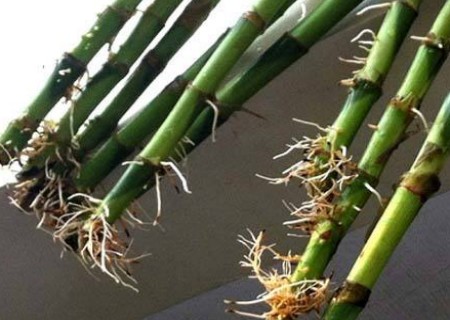What about the rotten roots of the dragon blood tree?
When you find that the leaves of the dragon blood tree planted in your home are drooping and wilting, you do not realize that the root system of the plant in the pot has rotted. So, what is the cause of rotting roots? In fact, most potted plants will be overwatered, poor drainage in the basin will cause long-term moisture, stagnant water will appear rotten root phenomenon. The dragon blood tree is no exception, not to mention the dragon blood tree itself is a relatively drought-tolerant plant, the demand for water is not high. The rotten roots of plants are mostly caused by too much watering, so the first thing we need to investigate and solve is whether the soil is too wet.

So, what about the rotten roots of the dragon blood tree? When you find that your dragon blood tree has rotten roots, don't panic, it may be worth saving. Next, the editor will tell you about the rescue measures after the dragon blood tree has rotten roots.
1. When the dragon blood tree is taken out of the basin, of course, care should be taken in the process of removing the pot, so as to avoid damaging the root system outside the soil and inside the soil, so as to further deepen the degree of injury.
2. After taking out the plant, gently remove the excess potted soil and expose the root system of the plant. At this time, you will find that many roots have become moldy and rotten. What we need to do is to cut off the rotten and necrotic parts of the root system with sterilized scissors, keep the root system as intact as possible, and cut off the over-slender old, weak, sick and residual roots as well.
3. After the root pruning is completed, the branches and leaves need to be pruned properly. The dry branches and leaves can be cut off directly, and some of the old and weak branches and leaves should also be cut off. It is also necessary to cut off the branches and leaves of those over-dense parts, which requires proper preservation of the branches and leaves of the plant according to the pruning degree of the root system, so as to reduce the burden of the root system and improve the success rate of rescue.
3. After pruning the roots and branches, smear some substances that can play the role of sterilization and disinfection on the wound, such as carbendazim, plant ash and so on, which can play the role of sterilization and disinfection without harming the roots of the plant. You can even leave the plant in the sun for a while until the skin is watertight. Of course, it is recommended to spray the branches and leaves with water to moisturize before the light.
4. Next, we are ready to transplant the finished plants back into the pot. Before putting on the basin, prepare new culture soil, you can use clean river sand + humus soil + garden soil according to the ratio of 5:3:2 to keep the soil moist or dry.
5. Pour some of the new culture soil into the flowerpot, then plant the dragon blood tree, and then cover the soil. Finally, the potted dragon blood tree will be put in a cool and ventilated place for maintenance and management. At the beginning of the stage, in addition to properly adding some foliar water to the plant by spraying, do not directly water the basin and ensure that the plant will return to normal growth after about 20 days.
If the plant is not rescued in the end, we should not be discouraged and suggest that the cuttage should be planted in a pot again. As long as we pay attention to watering management in the future maintenance process, I believe that similar incidents will not occur again. Even so, we can also accumulate some valuable maintenance experience for everyone. Apart from doing things well, we should also look on the bright side.
Time: 2019-05-30 Click:
- Prev

What if Phnom Penh Ruixiang does not blossom?
Phnom Penh Daphne is widely used in family potted plants because of its high ornamental value, while Phnom Penh Daphne usually blossoms during the Spring Festival and lasts for 2 months, so it is often planted as a holiday flower. The process of blooming gives people a kind of beautiful enjoyment, especially beautiful potted flowers like Phnom Penh Ruixiang. But when it comes to flowering,
- Next

What about the rotten roots of rich bamboo?
Rich bamboo is a kind of plant suitable for raising indoors, not only can it be watched, but I heard that it can bring good luck to the owner of the house, and it can make a fortune. Otherwise, how can it be called rich bamboo? As the rich bamboo is easier to raise, but occasionally some friends have the problem of rotten roots in the process of conservation, so what about the rotten roots of rich bamboo? actually
Related
- Fuxing push coffee new agricultural production and marketing class: lack of small-scale processing plants
- Jujube rice field leisure farm deep ploughing Yilan for five years to create a space for organic food and play
- Nongyu Farm-A trial of organic papaya for brave women with advanced technology
- Four points for attention in the prevention and control of diseases and insect pests of edible fungi
- How to add nutrient solution to Edible Fungi
- Is there any good way to control edible fungus mites?
- Open Inoculation Technology of Edible Fungi
- Is there any clever way to use fertilizer for edible fungus in winter?
- What agents are used to kill the pathogens of edible fungi in the mushroom shed?
- Rapid drying of Edible Fungi

